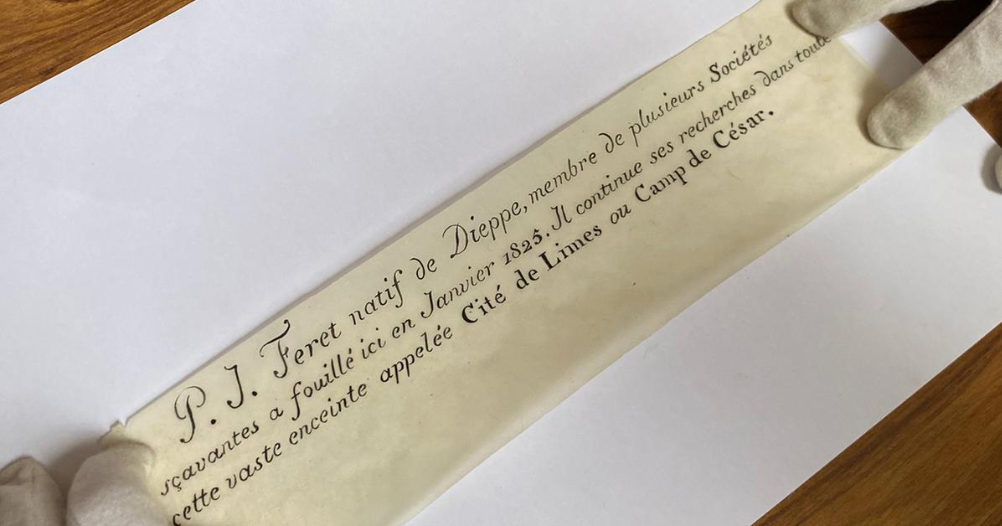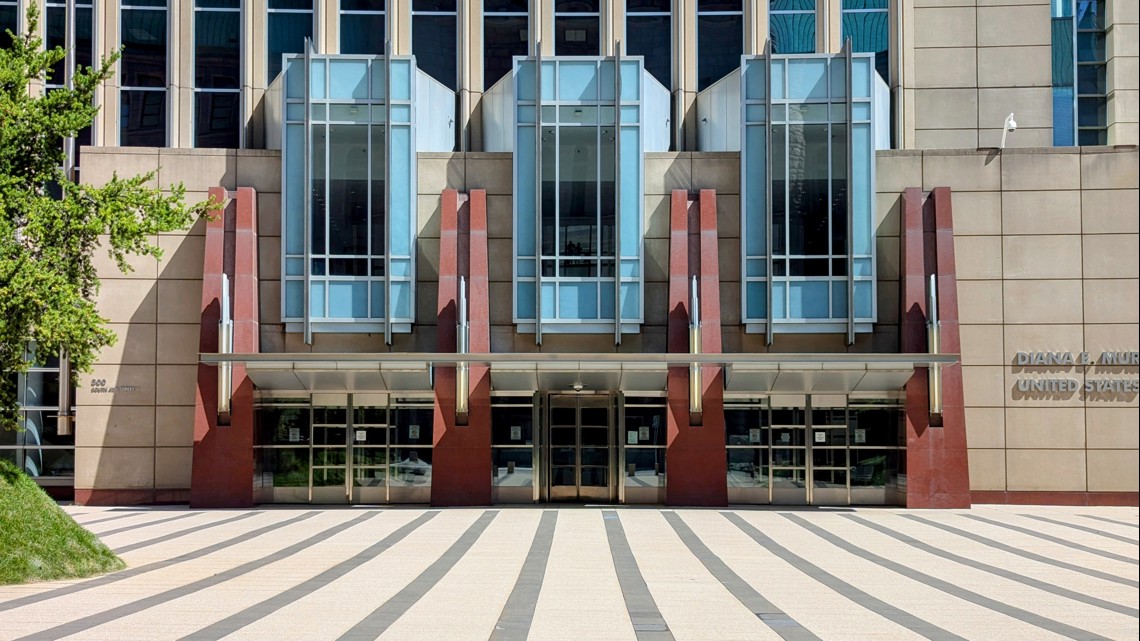CBS News
Trump seeks to delay trial in classified documents case until after 2024 presidential election

Washington — Lawyers for former President Donald Trump are asking to delay his May trial in the case involving his alleged mishandling of sensitive government documents until after the 2024 presidential election.
In a filing with the federal district court in South Florida submitted late Wednesday, lawyers Chris Kise and Todd Blanche accused special counsel Jack Smith and his team of prosecutors of taking too long to turn over material that was collected during their investigation. They argued the current schedule is “unworkable,” given the status of discovery, lack of necessary secure facilities and litigation under the Classified Information Procedures Act, which governs how classified material is being used in the case.
The defense attorneys said the schedule for the case in Fort Pierce, Florida, conflicts with the proceedings for a separate case in Washington, D.C., brought by the special counsel regarding Trump’s alleged efforts to thwart the transfer of presidential power after the 2020 election. U.S. District Judge Aileen Cannon, who is presiding over the documents case, scheduled the trial to begin May 20.
The presidential election is set for Nov. 5, 2024, and Trump is currently the leading candidate in the race for the Republican presidential primary.
“The March 4, 2023 trial date in the District of Columbia, and the underlying schedule in that case, currently require President Trump and his lawyers to be in two places at once,” the former president’s lawyers wrote. “And, months after the Office’s representation to the Court, discovery is not complete in this case—including with respect to the classified documents at issue in more than 25% of the [Espionage Act] counts in the Superseding Indictment.”
The defense team noted in that filing that nine of the 32 documents giving rise to the charges of unlawful retention of national defense information, as well as “several uncharged documents” are not yet available to them. Four of those nine documents were relocated to Washington, D.C., “at the request of the documents’ owners,'” Trump’s lawyers said, while the remaining five “are not available” to Trump or his lawyers “at any location,” they added.
Trump’s lawyers also said classification reviews, which they argued should be turned over to them as part of the discovery process, have not yet been produced.
“These are not mere ‘complaints.’ The Special Counsel’s Office has not provided some of the most basic discovery in the case,” they wrote. “Given the current schedule, we cannot understate the prejudice to President Trump arising from his lack of access to these critical materials months after they should have been produced.”
In addition to the alleged “ongoing discovery failures,” the defense team also raised concerns about the time it will take for the federal government to establish a secure facility in the area where it can handle evidence in the case, which Trump’s team claims will take more than three months.
“The Special Counsel’s Office has failed to make very basic arrangements in this District for the handling of the relevant classified information, the holding of necessary CIPA hearings, and the production of related work products by the court and counsel,” they argued.
The former president’s lawyers asked the court to require the special counsel’s team to disclose whether it had conducted prudential search requests, which the Justice Department describes as a search of intelligence community files undertaken when prosecutors believe they may contain pre-existing classified information that could impact their charging decisions.
Trump’s lawyers claimed Smith failed to explain “whether and to what extent” it conducted prudential searches in the case against the former president.
“Because some of the documents at issue address topics that are covered in open-source materials, it is extremely likely that at least some [U.S. intelligence community] holdings undercut the Office’s contention that documents dating back to 2017 (and earlier) contain information that was closely held at the time of the alleged unlawful retention in 2021 and 2022,” they argued. “As a result, the Office is on notice of potentially exculpatory information held by the same ‘owners’ it acknowledges communicating with regarding the case.”
Prosecutors have objected to Trump’s request to change the schedule for the documents case, and told the court in a filing last week that as of Sept. 14, Smith’s office had turned over 1.28 million pages and all the security camera footage it acquired during its probe. Smith’s team also said it had turned over “the majority” of classified material it planned on producing.
The Justice Department lawyers wrote that Trump’s lawyers were unable to fully review the classified information turned over because they lacked “all the necessary read-ins” — which involves being approved for access to sensitive or restricted information — and acknowledged that there has been a “slightly longer than anticipated timeframe” for some procedural aspects of the case.
“The timing of the defense counsel’s read-ins is not controlled by the Special Counsel’s Office,” prosecutors wrote, adding that they would provide nearly all of the outstanding classified material by Friday, which includes audio recordings of interviews and information related to classification reviews.
Trump was charged with 40 counts related to his handling of documents marked classified that were retrieved from his South Florida resort, Mar-a-Lago, after he left office in January 2021. Two co-defendants were also charged by the special counsel: Aide Walt Nauta, who is facing eight counts, and Mar-a-Lago property manager Carlos De Oliveira, who is facing three counts. All three pleaded not guilty.
CBS News
South Carolina death row inmate Freddie Owens executed by lethal injection

South Carolina put inmate Freddie Owens to death Friday as the state restarted executions after an unintended 13-year pause because prison officials couldn’t get the drugs needed for lethal injections.
Owens was convicted of the 1997 killing of a Greenville convenience store clerk during a robbery. While on trial, Owens killed an inmate at a county jail. His confession to that attack was read to two different juries and a judge who all sentenced him to death.
Owens, 46, was pronounced dead at 6:55 p.m.
When the curtain to the death chamber opened, Owens was strapped to a gurney, his arms stretched to his sides.
He mouthed a word to his lawyer, who smiled back. He appeared conscious for about a minute, then his eyes closed and he took several deeps breaths.
His breathing got more shallows and his face twitched for another four or five minutes before the movements stopped.
A medical professional came in and declared him dead about 13 minutes later.
Owens’ last-ditch appeals were repeatedly denied, including by a federal court Friday morning. Owens also petitioned for a stay of execution from the U.S. Supreme Court. South Carolina’s governor and corrections director swiftly filed a reply, stating the high court should reject Owens’ petition. The filing said nothing is exceptional about his case.
The high court denied the request shortly after the scheduled start time of the execution.
His last chance to avoid death was for Republican South Carolina Gov. Henry McMaster to commute his sentence to life in prison. McMaster denied Owens’ request as well, stating that he had “carefully reviewed and thoughtfully considered” Owens’ application for clemency.
McMaster said earlier that he would follow historical tradition and announce his decision minutes before the lethal injection begins, when prison officials call him and the state attorney general to make sure there is no reason to delay the execution. The former prosecutor had promised to review Owens’ clemency petition but has said he tends to trust prosecutors and juries.
Owens was convicted of killing Irene Graves in 1999. Prosecutors said he fired a shot into the head of the single mother of three who worked three jobs when she said she couldn’t open the store’s safe.
But hanging over his case is another killing: After his conviction, but before he was sentenced in Graves’ killing, Owens fatally attacked a fellow jail inmate, Christopher Lee.
Owens gave a detailed confession about how he stabbed Lee, burned his eyes, choked and stomped him, ending by saying he did it “because I was wrongly convicted of murder,” according to the written account of an investigator.
That confession was read to each jury and judge who went on to sentence Owens to death. Owens had two different death sentences overturned on appeal only to end up back on death row.
Owens was charged with murder in Lee’s death but was never tried. Prosecutors dropped the charges with the right to restore them in 2019 around the time Owens ran out of regular appeals.
Owens may be the first of several inmates to die in South Carolina’s death chamber at Broad River Correctional Institution. Five other inmates are out of appeals and the South Carolina Supreme Court has cleared the way to hold an execution every five weeks.
South Carolina first tried to add the firing squad to restart executions after its supply of lethal injection drugs expired and no company was willing to publicly sell them more. But the state had to pass a shield law keeping the drug supplier and much of the protocol for executions secret to be able to reopen the death chamber.
To carry out executions, the state switched from a three-drug method to a new protocol of using just the sedative pentobarbital. The new process is similar to how the federal government kills inmates, according to state prison officials.
South Carolina law allows condemned inmates to choose lethal injection, the new firing squad or the electric chair built in 1912. Owens allowed his lawyer to choose how he died, saying he felt if he made the choice he would be a party to his own death and his religious beliefs denounce suicide.
South Carolina’s last execution was in May 2011. It took a decade of wrangling in the Legislature — first adding the firing squad as a method and later passing a shield law — to get capital punishment restarted.
South Carolina has put 43 inmates to death since the death penalty was restarted in the U.S. in 1976. In the early 2000s, it was carrying out an average of three executions a year. Only nine states have put more inmates to death.
But since the unintentional execution pause, South Carolina’s death row population has dwindled. The state had 63 condemned inmates in early 2011. It had 32 when Friday started. About 20 inmates have been taken off death row and received different prison sentences after successful appeals. Others have died of natural causes.
In his final appeal, Owens’ lawyers said prosecutors never presented scientific evidence that Owens pulled the trigger when Graves was killed and the chief evidence against him was a co-defendant who pleaded guilty and testified that Owens was the killer.
Owens’ attorneys provided a sworn statement two days before the execution from Steven Golden saying Owens was not in the store, contradicting his trial testimony. Prosecutors said other friends of Owens and his former girlfriend testified that he bragged about killing the clerk.
Owens’ lawyers also said he was just 19 when the killing happened and that he had suffered brain damage from physical and sexual violence while in a juvenile prison.
CBS News
Message in a bottle, written 200 years ago by an archaeologist, found on a French clifftop

Volunteers on an archaeological dig in the ruins of an ancient Gaulish village high above the cliffs in northern France this week uncovered a small glass vial —and within it a neatly rolled, 200-year-old message from a colleague from another era.
The note was written by archaeologist P.J Féret, who conducted a dig at the Cité de Limes site in January 1825, the town supporting the dig, Eu, said in a Facebook post.
Féret wrote —perhaps as inspiration to the nascent archaeologists standing in his footsteps nearly two centuries later— that he was a member of several scientific societies and he “continues his research in this entire vast compound.”
Eu
“It was an absolutely magic moment,” Guillaume Blondel, who heads the archaeological service for the town of Eu, told the BBC. “We knew there had been excavations here in the past, but to find this message from 200 years ago… it was a total surprise.”
“Sometimes you see these time capsules left behind by carpenters when they build houses. But it’s very rare in archaeology,” Blondel said. “Most archaeologists prefer to think that there won’t be anyone coming after them because they’ve done all the work!”
Eu
Municipal records confirmed that Féret conducted a first dig at the site 200 years ago.
The oldest message in a bottle ever found was 131 years and 223 days old when it was discovered, Guinness World Records said in a statement. Australians Tonya and Kym Illman found the message on Jan. 21, 2018, at Wedge Island, Australia.
A German ship captain threw a gin bottle overboard on June 12, 1886, Guinness World Records said, with a message written in ink, that contained the ship’s coordinates and details, including departure and arrival times. The note, from the Deutsche Seewarte in Hamburg, requested the finder deliver the note to the nearest German Embassy.
If authenticated, Féret’s 200-year-old message in a bottle will be the oldest ever found.
CBS News
Port officials brace for potential strike by dockworkers along the East Coast

Authorities are gearing up as a threatened strike by dockworkers at ports along the East Coast and Gulf Coast draws closer.
The Port Authority of New York and New Jersey is “coordinating with partners across the supply chain to prepare for any impacts” from a possible work stoppage by workers represented by the International Longshoremen’s Association as they negotiate with the United States Maritime Alliance (USMX), a Port Authority spokesperson told CBS MoneyWatch on Friday.
“We urge both sides to find common ground and keep the cargo flowing for the good of the national economy,” added the spokesperson, noting that $240 billion in goods move through the two ports each year and that such trade supports more than 600,000 local jobs.
According to the union, a strike would affect ports from Maine to Texas. A stoppage could involve up to 45,000 workers at ports that account for roughly 60% of U.S. shipping traffic, leading to a major disruption of shipments, Oxford Economics said in a report.
“Even a two-week strike could disrupt supply chains until 2025,” Grace Zwemmer, associate U.S. economist with Oxford, said in the report.
Key deadline looms
The ILA has threatened to strike if a new labor agreement with East Coast port terminal and shipping companies represented by the USMX is not reached by the time the current contract expires on October 1.
Although the sides continue to negotiate, the odds of a rare strike that threatens to shut down some of the nation’s busiest ports are rising.
“There will be a shutdown, assuming that there’s is no intervention, at midnight on Monday the 30th,” Bethann Rooney, director of the Port Authority of New York and New Jersey, the nation’s second-busiest port, told a briefing earlier in the week.
Should that occur, all activity loading and unloading cargo containers and automobiles would come to a standstill, while cruise ships would continue to operate, Rooney said.
The Port Authority isn’t involved in the bargaining between the ILA and USMX, bur rather leases space at the ports to shipping companies. Terminal operators and ocean carriers are “working to bring in as many ships as possible” ahead of a potential walkout, said Rooney.
Those steps include “working with truckers and the rail carriers to get as much cargo out as humanly possible, as quickly as possible,” the port director said.
A race to unload
The two ports are currently unloading about 20 large container ships a week, and they expect 150,000 containers to be unloaded ahead of the strike deadline, Rooney said.
“At the same time, ocean carriers are beginning to put essentially embargoes on export cargo “so that it doesn’t come into East and Gulf coast ports and then wind up sitting there,” she said.
Container ships carrying imports bound for Newark and Elizabeth in New Jersey and Staten Island in New York City will end up moored at specified spots in New York Harbor or off the coast during the strike, or remain at sea until they can come in. The Coast Guard and U.S. customs and Border Protection would oversee arriving ships at the port facilities once a strike was over.
The ILA union walked away from the bargaining table in June, declaring that a type of automation introduced at the Port of Mobile in Alabama was in violation of the current contract.
Based in North Bergen, New Jersey, the ILA represents 85,000 workers across the East and Gulf Coasts. The union is demanding sizable wage increases for its members as well as protection from job-killing automation.
The USMX has said it has not been able to schedule new bargaining sessions with the union.
“It is disappointing that we have reached this point where the ILA is unwilling to reopen dialogue unless all of its demands are met,” USMX said Tuesday in an update. “The only way to resolve this impasse is to resume negotiations, which we are willing to do at any time.”











GIPHY App Key not set. Please check settings